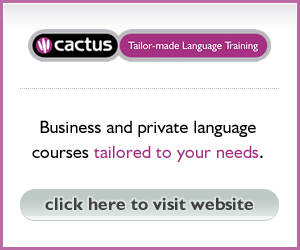What is ESOL and where can I teach it?
Tuesday, 10th March 2009
ESOL is the other side of TEFL.
ESOL stands for English to Speakers of Other Languages and is the field of teaching which goes on mainly in Further Education Colleges and Community Centres, and also within schools where there are numbers of pupils needing assistance with their language skills to help them with their studies. Courses are aimed at immigrants to Britain who need to learn the language so as to live easily and work or study productively in the UK.
Two Distinct Contexts
Teaching English in the UK happens in two distinct contexts: TEFL, which is teaching English to students who have come to this country for a short period of time, specifically to learn the language alongside doing some tourism, and ESOL, which is teaching English to speakers of other languages who have come to this country to live and work and intend to stay for some time.
Different Needs
These two groups have different needs. The needs of TEFL teachers are well documented. However, ESOL teaching and training has not received the same attention. The ESOL students need to survive the every day issues of living in a country which not only has different customs and ways of doing everyday things, but also communicates in a new language, English, both in spoken discourse, and, importantly, in written discourse too.
Classes for ESOL students
ESOL students need to speak English to get on in this country. For this they need to take lessons and study. There are various, though few, ways they can learn: in specially organised classes, usually run at a Further Education college or Community Centre, and subsidised by local government, where funding has been allocated for this. Some may be lucky enough to get places as language students (‘guinea pigs’) on TEFL courses taking place at a few privately run English language schools around the country.
Children
A situation which has received a lot of attention is the provision of additional English help for school-age students (EAL). The number of children enrolling in state schools who do not have much grasp of English is known to have reached worrying proportions in some parts of the country.
Who are the ESOL teachers?
We often receive enquiries from teachers working in the state system who have spotted the need for training to equip them to be of the most use to their ESOL students in the regular classroom situation. We are able to offer them short courses, usually online, which outline the main principles of teaching English as a Foreign language. This helps. But it does not entirely do the job.
There are Diploma level training courses which exist under the Cambridge ESOL and Trinity TESOL banners: for teachers who are already working in FE colleges and able to commit themselves to this training this is an excellent way to get job tenure. But these courses are usually in-service: the question is, how to get the jobs in the first place so as to benefit from the on-the-job training?
Local Councils and Schools
Councils sometimes consider the idea of an ESOL training course to increase the supply of teachers with basic training in this area. Cactus worked with Manchester City Council on just this area. Some schools allow money in their budget to upskill regular teachers with the necessary knowledge and techniques to help the EAL students.
Cactus Courses
Cactus can help. Under our tailormade courses umbrella, we are able to create courses which either start from entry level, teaching teachers how to teach English as an additional language, and also courses which do not start from scratch, but from where the teacher is now, taking into account their teaching experience and background, and adding to this the special knowledge and skills needed to put the focus firmly on the ESOL side of things.
Tags: efl, language, course, languages, cactus, tefl, english
Posted by Laura Lippert 2009-03 under Language variations, Teaching Languages,
Permalink

Posted by romario maya on 01/02 at 09:27 PM
When I finish ESOL studies, can I get accepted to the University?